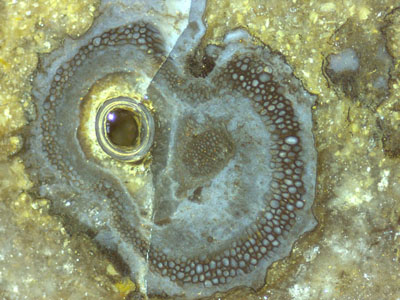Research gone astray - Thoughts on the
inherent dynamics
Inherent dynamics based on feedback keeps many
things prospering, including the science community. This is useful but
risky
since it does not prevent fancy or absurd developments: Some scientist,
gifted with moderate power of
observation, explains an observation with an allegedly clever idea.
With own
ideas lacking, others readily adopt that idea and spread it in renowned
journals. (Often the referees are lenient in order to avoid trouble for
the authors,
the editorial staff, and for themselves.)
With first publications on the subject having been printed, the authors
can mutually quote themselves, which creates a semblance of
trustworthiness. Elevated to the “scientific level” in this way, and
with references to environment and climate change, this new “field of
research” is suitable for the submission of project proposals.
This incites others to join without critical reflection. Since the
insiders are shielded against the public by their specialist knowledge,
they can feel unobserved and thus develop their research virtually
without restriction. They shun critical inspection and questions, and
they respond to them with joint defense and with the pretended
conviction that the allotted research funding serves as evidence of the
meaningfulness of their work.
Nowadays, with the praised ability of science to correct itself being
weakened, one cannot expect that within the mutually supportive group
of research fund recipients someone is courageous enough to mistrust
the idea that feeds him. Therefore, structures of that kind appear
stable but as soon as the base is taken away, the allegedly clever idea
at the beginning, the concoction of alleged results breaks down utterly.
The sequence of things described here may seem unbelievable but can be
substantiated with facts. Suitable for this purpose is a case from
palaeobotany, the worldwide research on “oribatid mite coprolites” in
petrified wood. The phenomenon of the alleged fossil mite droppings is
simple, instructive, and can be explained such that it is easily
understood also by non-professionals [1]. Despite of plain contrary
evidence the involved scientists promote their cherished subject with
latest publications [2,3].
In order to cleanse science from aberrations of that kind, doubts must
be raised outside the group of insiders, and an erroneous idea must be
refuted despite of the resistance of its often influential proponents.
This is no easy task because the involved scientists prefer to retreat
behind publications and quotations instead of confronting reasonable
arguments, or they resort to haughtiness, or pretend to be offended in
order to avoid discussions.
How will the curious aberrations be judged in the future ? All those
who contributed will be named: those who carelessly initiated such
development, those who accelerated and spread it, and those who helped
with “discussions and advices” or favourable reviews instead of
warnings to be careful and to critically think the matter over. Also it
will be reported that some perseverance was required to expose
consecutive publications on a subject as ill-conceived, and to finally
irritate the authors such that they think it over and leave the happily
trodden erroneous path. There will be warnings against the errors which
have been accumulated in the scientific literature without ever having
been corrected, since virtually none of the authors who drew
conclusions from false assumptions has later retracted them.
When students come across an error in the scientific literature
unawares, it may merely give rise to transient frustration but all
carelessly committed follies taken together are like morass on the road
of scientific progress.
An example of unsubstantiated conclusions is found in connection with
oribatid mites and their “prominent role … in Permian terrestrial
ecosystems” [2,3]. The alleged coprolites of the elusive oribatid mites
may serve as a warning against a kind of feedback which can elevate an
initial folly to a subject of worldwide vain research.
[1] www.chertnews.de , Fossil Wood News 23,
24,
Rhynie Chert News 85
[2] R. RÖßLER, R. KRETZSCHMAR, Z. FENG, R. NOLL: Fraßgalerien
von
Mikroarthropoden in Koniferenhölzern ...
Veröff. Mus.
Naturkunde Chemnitz 37(2014), 55-66.
[3] Z. FENG, J.W. SCHNEIDER, C.C. LABANDEIRA, R. KRETZSCHMAR,
R.
RÖßLER: A specialized feeding habit
…
Palaeogeography,
Palaeoclimatology, Palaeoecology 417(2015), 121-124.
H.-J. WEISS
2015
Annotation 2016
In 2015 this essay has been distributed among professionals and people
who simply might be interested in the ways
of
science and its tendency to go astray occasionally.
This picture had been shown at the European Palaeobotany Palynology
Conference 2014 and at a related
exhibition in the town hall of Padua, with the caption:
"Be careful! Ventarura
is watching you. This may serve as
an encouragement to palaeobotanists to work carefully as if they
were watched."
This has also been distributed among those to whom it concerns, as one
of the
repeated attempts since 2007 to refute the hypothesis
of oribatid
mite
coprolites in petrified wood, which is a favourite idea among
palaeobotanists
worldwide even without any mites seen, by means of ridicule
where serious argumentation is ignored. Apparently
this effort has not been in vain, at
least with the Naturkunde-Museum Chemnitz: A comprehensive publication
in 2016
[4] on the Early Permian of Chemnitz lists quite a number of
invertebrates and their traces but does not mention the elusive
oribatid
mites although they had been the subject of several recent and previous
publications since 2000 or earlier.
Judging from experience one can guess what comes next: The erroneous
publications on petrified wood with
oribatid mites will
not be retracted or declared false but they will simply not be
mentioned any more, thus remaining a source of confusion to the
readers. This applies also to tree trunks offered in Chemnitz as
petrified charcoal.
[4] L. LUTHARDT, R. RÖßLER, J.W. SCHNEIDER: Palaeoclimatic and
size-specific
conditions in the early Permian fossil forest of Chemnitz ...
Palaeogeography,
Palaeoclimatology, Palaeoecology 441(2016), 627-652.
